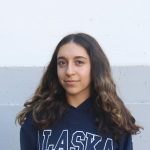Did you know that Jennifer Anistion, best known for her work in the hit TV show “Friends” struggled with dyslexia? The learning disability Dyslexia affects the ability to read, speak, and spell. It is the most common learning disability in the world, affecting 80-90 percent of people who struggle with a type of learning disability, according to the Yale Center for Dyslexia and Creativity.
. A learning disability is: a disorder that affects the ability to understand or use spoken or written language, do mathematical calculations, coordinate movements, or direct attention. I will be highlighting some common, and less well known learning disorders that many students face.
One common learning disorder is Dyslexia, which is easily the most common. Dyslexia Is a learning disorder that makes reading more difficult, due to difficulty decoding speech sounds and understanding how they relate to letters and words. “Dyslexia results from individual differences in the parts of the brain that enable reading,” according to the Dyslexia Center of Utah. Some people have heard the myth that Dyslexia is rare, however in actuality, it affects an astonishing 20% which is 1 in 5 of people. Kids and teens must be more educated about learning disorders.
“Everybody is a genius. But if you judge a fish by its ability to climb a tree it will live its whole life believing that it is stupid,” said Albert Einstein who has in the past opened up about his struggles with dyslexia, how it affected him as a child and how he persevered to become one of the most well known theoretical physicists.
One common type of learning disability is Dyscalculia. Dyscalculia is a math-related learning disability, making it harder for one to calculate, solve and understand number related concepts. According to The National Library of Medicine, it affects 3-7% of adolescents , but is vastly understudied compared to Dyslexia or Attention Deficit Hyper Disorder (ADHD). Many struggle with math due to how fast the concepts are taught. Although many students may not have Dyscalculia, it can help us relate to those who do.
ADHD is fairly well known as well. ADHD can include difficulty paying attention, trouble controlling impulsive behavior and overly active/energetic behavior. While we have all struggled to focus, being easily distracted is not the same thing as having ADHD. 1 in 11 adolescents 4 to 17 years old have ADHD. If ADHD is this common, you would think it would be more freely talked about especially in a school/learning environment. Be empathetic to those you know who may be struggling with it.
More kids are struggling with these kinds of challenges than you might think. If you are struggling with a learning disability or school in general, don’t be afraid to reach out to teachers and loved ones to help you find the resources, such as IEPs or 504s you need to succeed.


